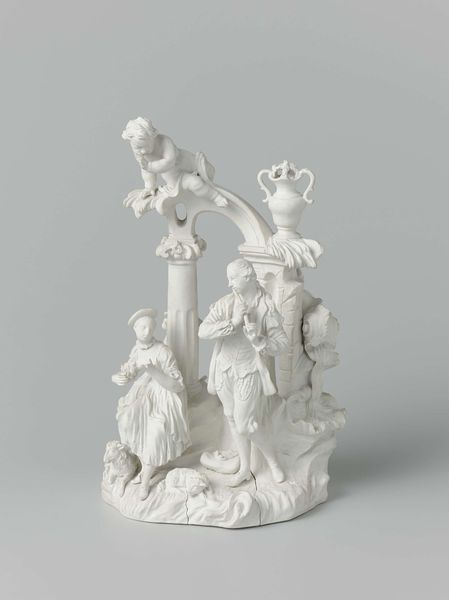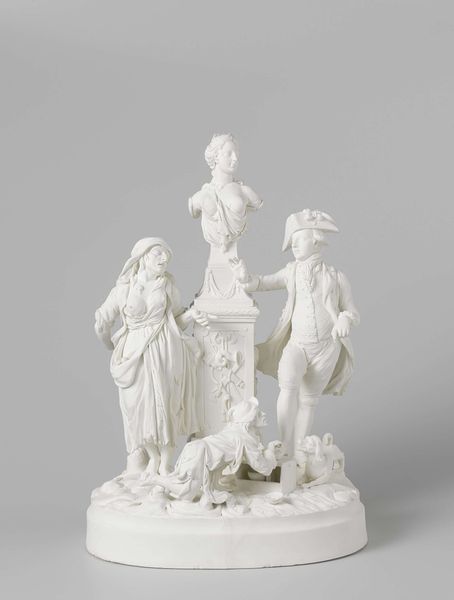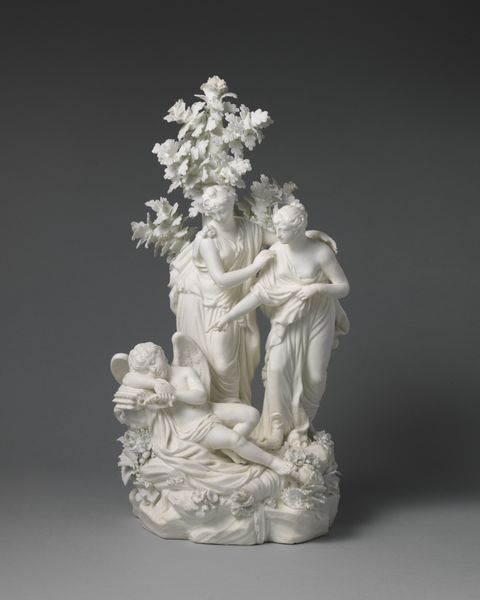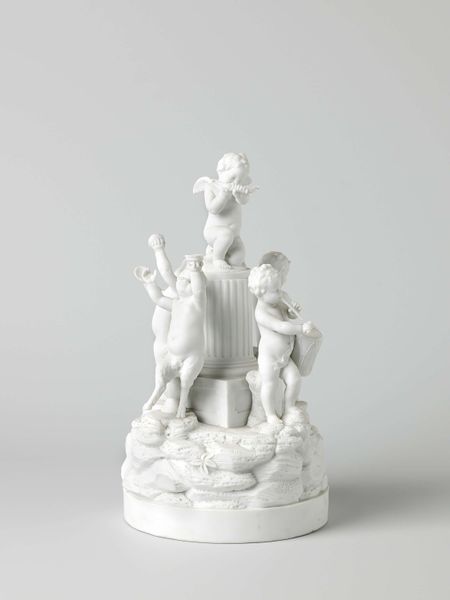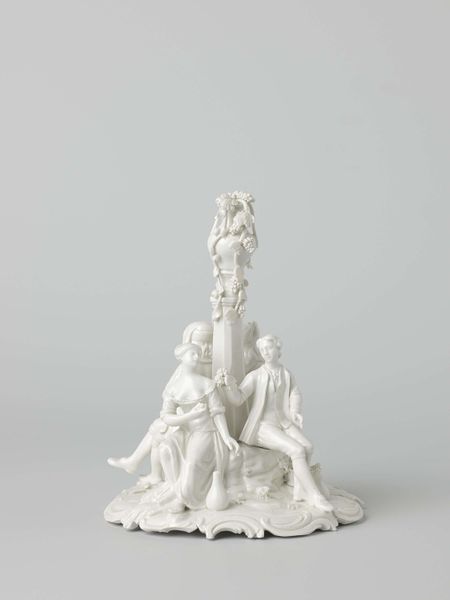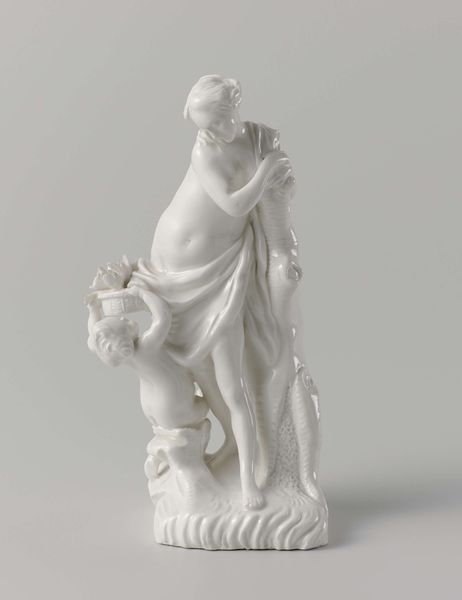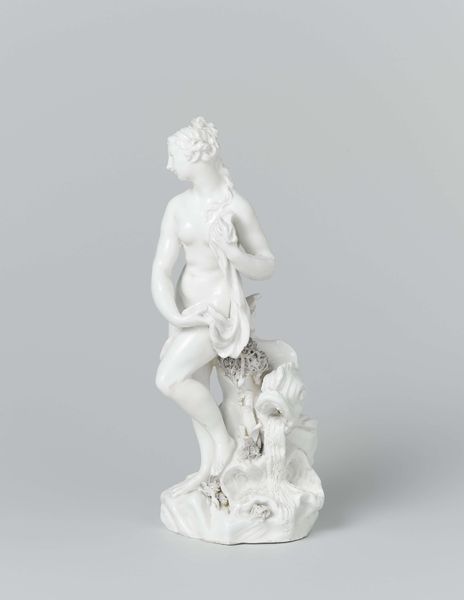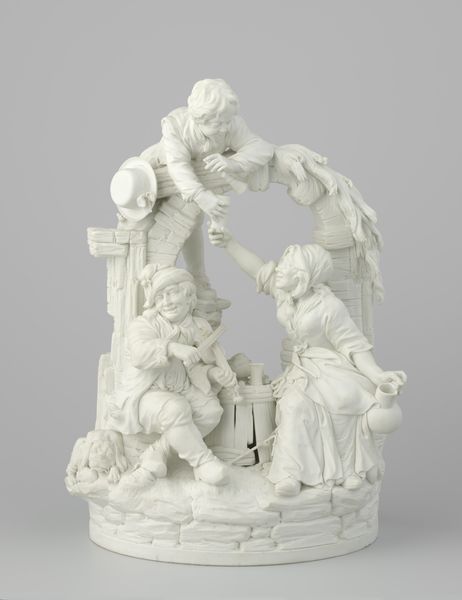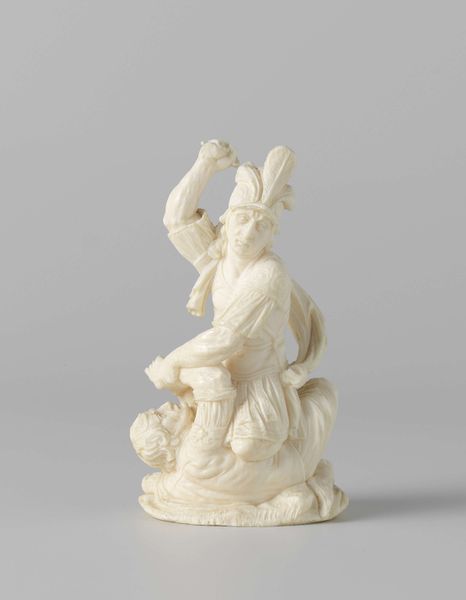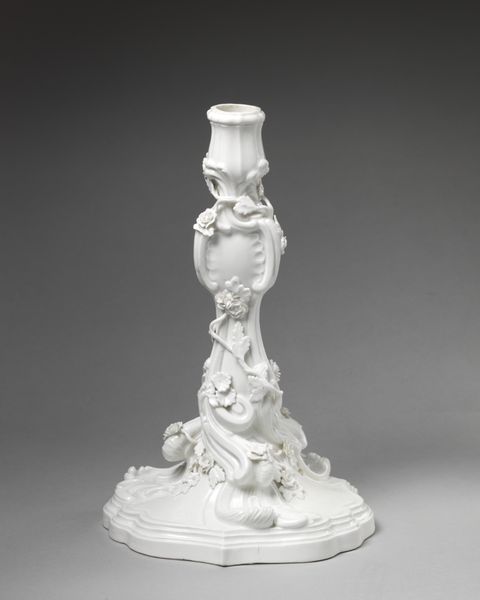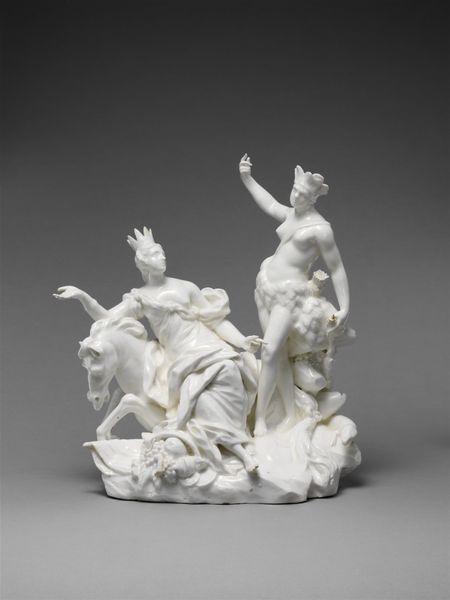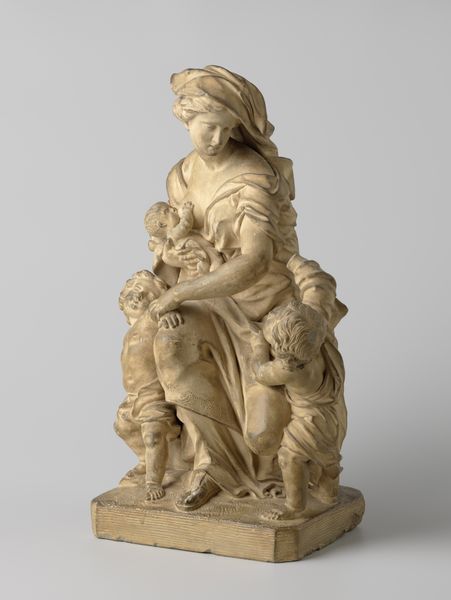
ceramic, porcelain, sculpture
#
sculpture
#
ceramic
#
porcelain
#
sculptural image
#
figuration
#
sculpture
#
genre-painting
#
miniature
#
rococo
Dimensions: height 27.4 cm, width 18.3 cm, depth 15.5 cm, width 16.8 cm, depth 14.6 cm
Copyright: Rijks Museum: Open Domain
Editor: Here we have “A Shepherd and Shepherdess near a Ruin,” a porcelain sculpture made around 1764-1765 by the Weesper porcelain factory. The stark white color really draws my attention. What can you tell me about this piece? Curator: Considering the Weesper factory, let's look at the materials. Porcelain wasn't just a medium, but a symbol of status and refinement in the 18th century. Its production was labor-intensive and linked to global trade networks. How do you think this impacts our reading of the sculpture? Editor: It’s interesting to think about luxury and labor in the same breath. Does the fact that this is porcelain affect the subject matter, these humble shepherds? Curator: Absolutely. This idyllic scene contrasts sharply with the industrial reality behind the porcelain production. The very act of representing pastoral simplicity in such a precious material speaks volumes about the complex relationship between aristocracy and idealized country life. Do you see a connection here between "high art" and "craft" due to the porcelain medium? Editor: I do. It almost feels like these figures are play-acting, like they're porcelain dolls in a rich person's game. I wouldn't have thought about that if it were, say, a quick sketch on paper. Curator: Precisely. The materiality of the work is the message of the work. This piece prompts us to think about production and social context. Editor: It certainly makes you question the elite's romanticized view of rural life. I’ll definitely look at porcelain differently now!
Comments
No comments
Be the first to comment and join the conversation on the ultimate creative platform.
